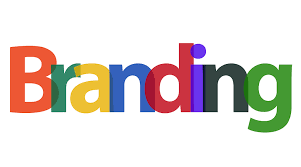1. Growth in online sales: The luxury goods market has seen a significant increase in online sales, driven by the rise of e-commerce platforms and the convenience they offer to consumers.
2. Increased focus on sustainability: Luxury brands are increasingly adopting sustainable practices, such as using ethically sourced materials, implementing recycling programs, and reducing their carbon footprint. Consumers are showing a greater interest in environmentally-conscious luxury goods.
3. Personalization and customization: Luxury brands are offering more personalized and customized products, allowing consumers to add their own unique touch to their purchases. This trend caters to the growing demand for individuality and exclusivity.
4. Rise of experiential luxury: Consumers are seeking experiences rather than just products. Luxury brands are responding by offering immersive experiences such as fashion shows, brand activations, and curated events that engage consumers on multiple levels.
5. Growing demand from millennials and Gen Z: The younger generation is becoming a major consumer group in the luxury goods market. Luxury brands are adapting to their preferences by embracing digital marketing strategies, collaborating with influencers, and creating products that resonate with their values and lifestyles.
6. Digital innovation: Luxury brands are leveraging technology to enhance the customer experience. This includes developments in augmented reality, virtual reality, and artificial intelligence, allowing customers to interact with products in innovative ways and creating a seamless online shopping experience.
7. Increased focus on Asian markets: Luxury brands are increasingly targeting Asian markets, particularly China, due to the rapid growth of affluent consumers in the region. Brands are adapting their strategies to resonate with local preferences and cultural nuances.
8. Collaborations and partnerships: Luxury brands are engaging in collaborations with artists, designers, and celebrities to create limited-edition collections or unique products. These collaborations help create buzz, attract new customers, and reach a wider audience.
9. Retro and vintage revival: Nostalgia is a strong trend in the luxury goods market, with heritage brands reintroducing classic designs and iconic pieces. Vintage products, such as vintage watches or handbags, are also gaining popularity among consumers looking for unique and timeless pieces.
10. Increased focus on wellness and lifestyle: Luxury brands are expanding beyond traditional product categories and entering the wellness and lifestyle space. This includes the introduction of luxury wellness products, such as high-end athleisure wear or skincare, and collaborations with wellness influencers or experts.
It’s important to note that trends can vary and evolve throughout the year, so it’s essential to stay updated with the latest news and insights from the luxury goods industry.




